Key takeaways:
- Feedback is a valuable tool for growth, offering insights that can refine content and enhance audience connection.
- Identifying relevant feedback sources, such as audience surveys and social media interactions, can uncover useful perspectives and trends.
- Prioritizing feedback strategically, by focusing on recurring themes and engaged community members, helps maintain authenticity while improving content quality.
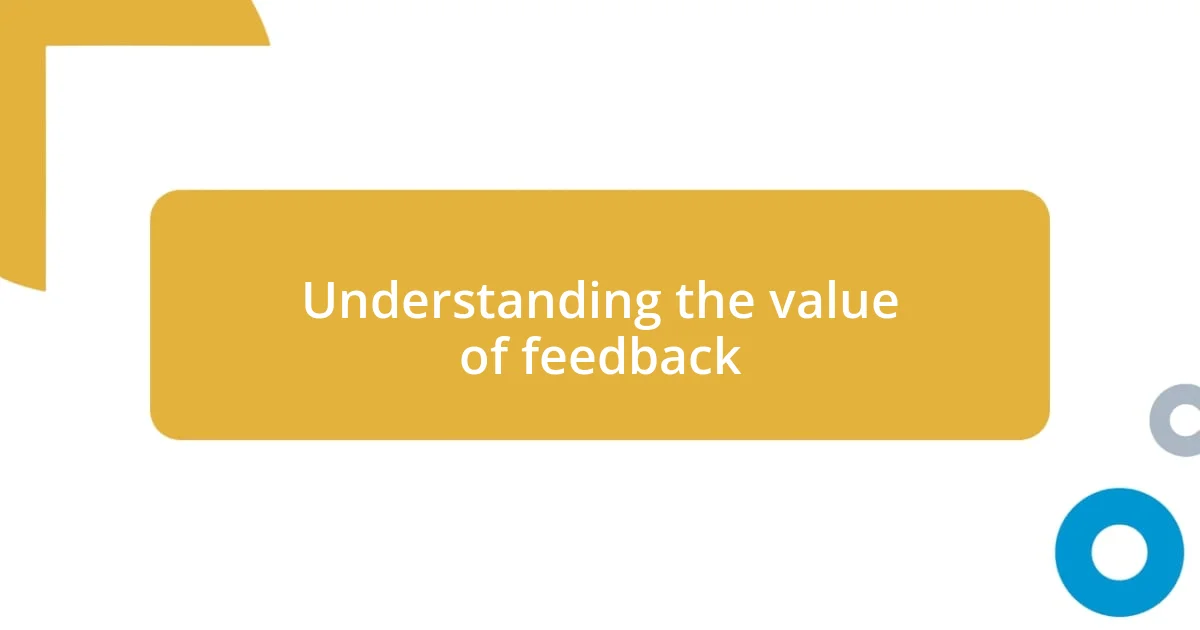
Understanding the value of feedback
Feedback is often seen as a simple critique, but I believe it holds enormous potential for growth. I remember a time when a colleague pointed out that my writing lacked clarity. At first, I felt defensive, but ultimately, I took it to heart and made it a pivotal moment in refining my craft. Have you ever received feedback that stung initially but later transformed your approach?
When I embrace feedback, I dive into a treasure trove of insights. For example, reader comments on my blog have illuminated aspects of my work that I hadn’t even considered. It’s like having a mirror that reflects not just what I see, but what my audience experiences. How often do we take the time to truly listen to what others think about our efforts?
Each piece of feedback is an invitation to improve and connect more deeply with my audience. I’ve learned that vulnerability plays a crucial role; sharing my hurdles with feedback invites conversations that can be incredibly enriching. What can you learn from the voices around you, and how can their input shape your journey?
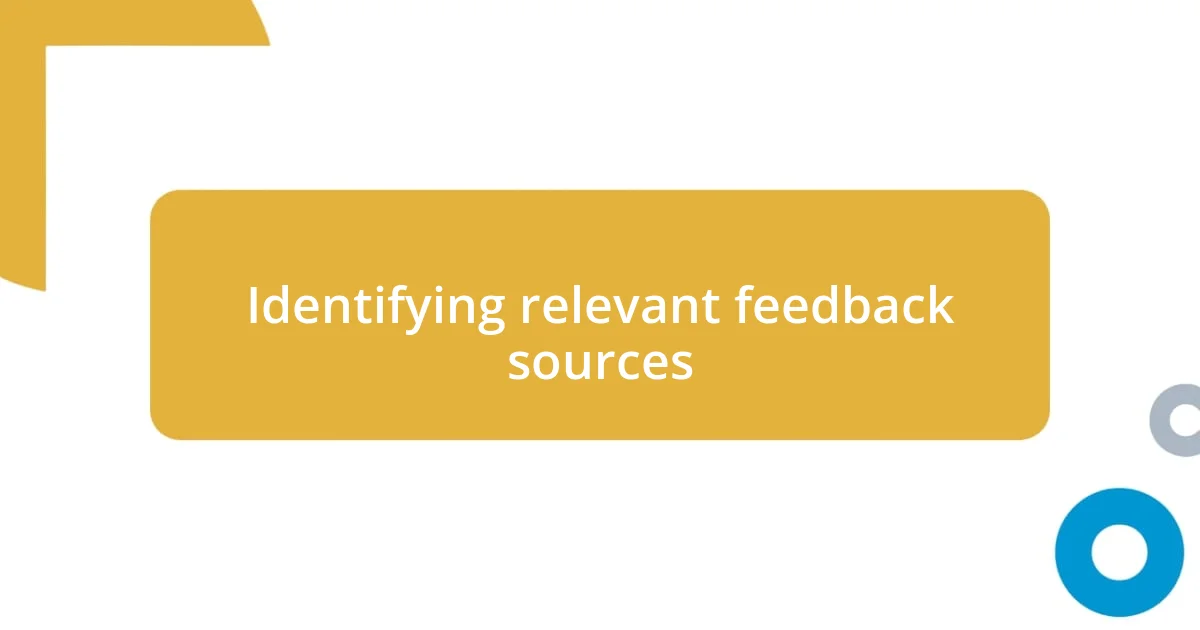
Identifying relevant feedback sources
Identifying relevant feedback sources requires a keen eye for where valuable opinions reside. I’ve often found that my most insightful feedback comes from unexpected places. For instance, during a casual chat with a friend over coffee, they pointed out a recurring theme in my content that resonated with them. It wasn’t in a formal review or a structured environment, but simply in the flow of our conversation. That taught me to listen closely, even in informal settings, where genuine feedback can emerge unexpectedly.
To help in pinpointing where to seek feedback, consider these sources:
- Audience surveys: Asking your readers directly what they want can reveal a wealth of ideas.
- Social media interactions: Pay attention to comments and direct messages; they often reflect how people perceive your content.
- Peer reviews: Colleagues can provide specialized insights, especially if they are familiar with your niche.
- Professional forums: Engaging in communities related to your field can uncover common challenges and suggestions.
- Analytics tools: Examining which content resonates most can guide your understanding of what’s valued by your audience.
Overall, each of these avenues offers a unique perspective that can refine your content and elevate your message.
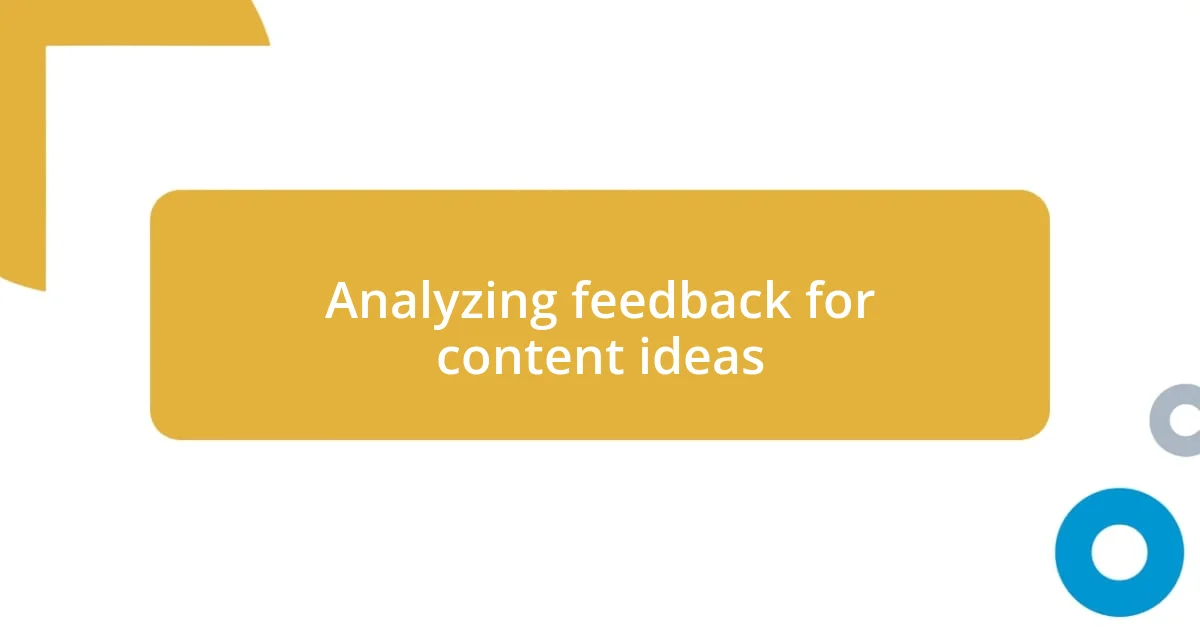
Analyzing feedback for content ideas
Analyzing feedback for content ideas is an essential part of my creative process. I recall a specific instance when I reviewed reader comments on a recent article. They highlighted areas I thought were clear, but my audience found confusing. This revelation shifted my perspective; I realized that my understanding could differ significantly from theirs. What insights can you uncover by closely analyzing the feedback you receive?
I’ve learned that dissecting feedback involves looking for patterns and trends. While some comments may be isolated, several others might echo similar sentiments. For instance, if multiple readers express enthusiasm for a particular topic, it signals to me that there’s potential for deep content exploration. It’s about finding the gold nuggets hidden within responses. How about you—have you observed any recurring themes in the feedback you’ve received?
Additionally, integrating feedback into brainstorming sessions encourages creativity. When I gather my thoughts and the insights from feedback, it’s like mixing various colors on a palette. During one brainstorming session, I found that my readers were hungry for more how-tos and practical insights. Fueled by their feedback, I started creating content that directly addressed their needs, leading to greater engagement. What ideas might emerge when you treat feedback as a collaborative effort?
| Feedback Type | Value for Content Ideas |
|---|---|
| Reader Comments | Indicates areas of interest and misunderstanding. |
| Social Media Interactions | Reflects real-time audience sentiments and trends. |
| Peer Reviews | Provides expertise and industry-specific insights. |
| Audience Surveys | Directly asks for audience preferences and needs. |
| Analytics Tools | Shows what content resonates most through data. |
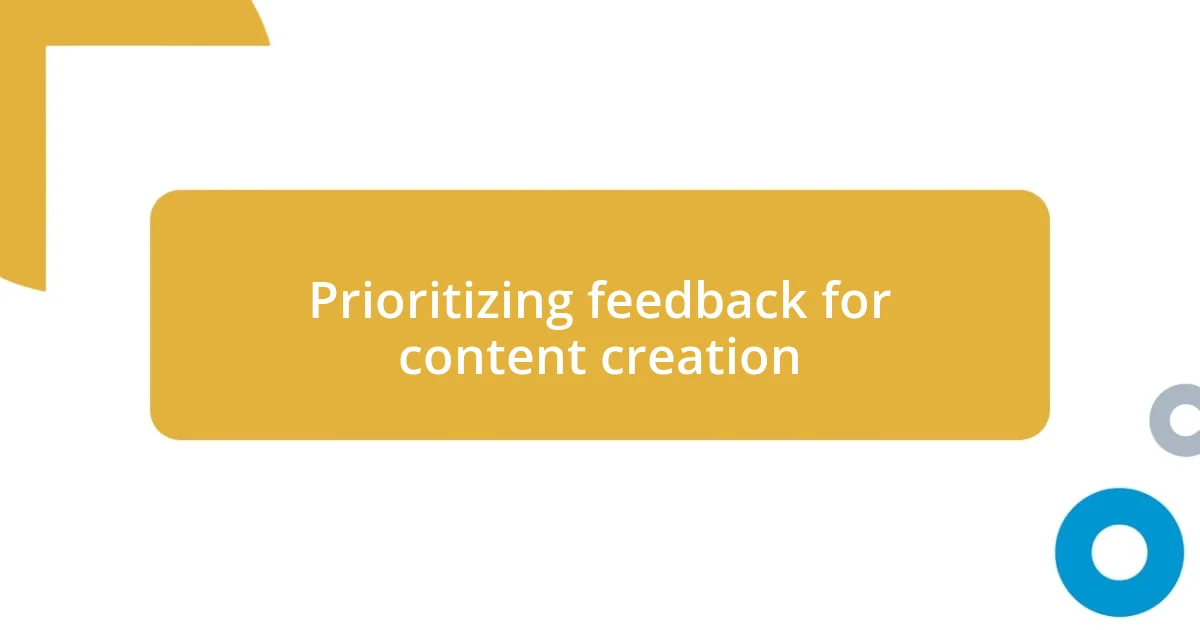
Prioritizing feedback for content creation
Prioritizing feedback in content creation can feel overwhelming, but I’ve found that not all feedback holds the same weight. For example, after launching a new series on my blog, I received a flood of messages—some praising the content while others pointed out gaps. Initially, I tried to address everything, but quickly realized that focusing on recurring themes gave me clearer direction. What are the key pieces of feedback that truly resonate with your audience?
When it comes to prioritization, I often consider the source of the feedback. A couple of years back, I ran into a reader at a local event who had passionate thoughts about a topic I hadn’t expected. Their enthusiasm was contagious, illuminating a blind spot in my content strategy. This made me realize that feedback from engaged community members can be more valuable than generic responses. How can you find and prioritize feedback from your most passionate supporters?
Ultimately, I’ve learned to be strategic about incorporating feedback. Instead of trying to implement every suggestion, I focus on the ones that align closely with my content goals and reader interests. This approach not only streamlines my work but also helps me maintain authenticity in my voice. Have you ever felt tempted to drift too far from your original vision based on feedback? Balancing external insights with personal values is crucial in creating meaningful content.
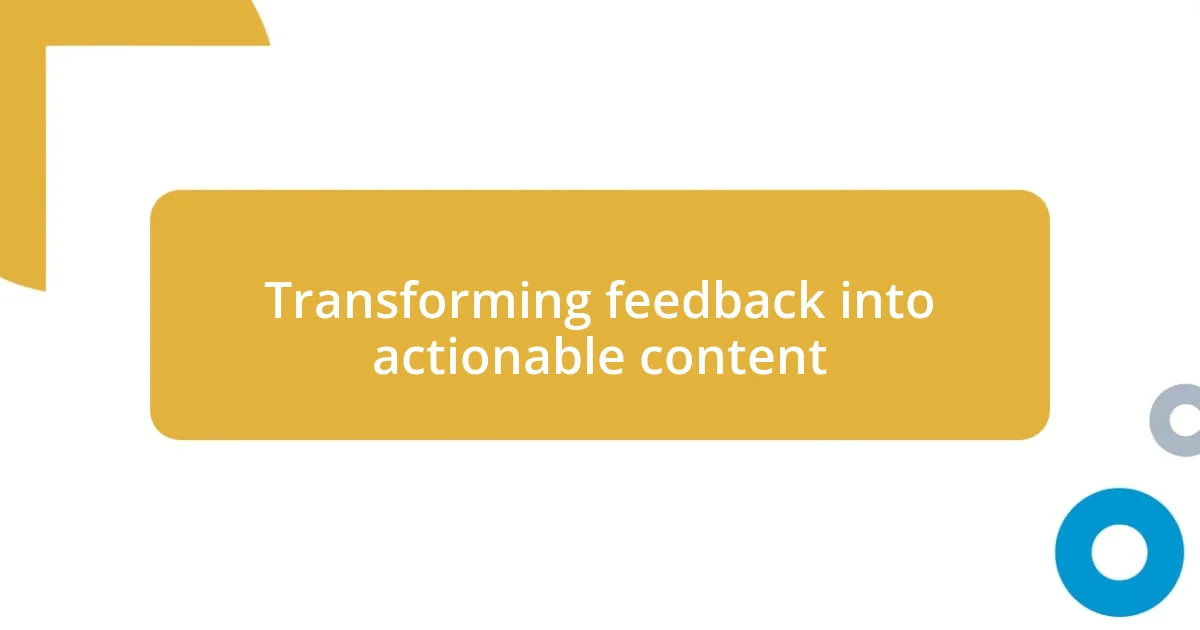
Transforming feedback into actionable content
Transforming feedback into actionable content requires a thoughtful approach. I remember a time when I received a mix of praise and constructive criticism on a tutorial I created. While some readers loved the concept, others struggled with the step-by-step instructions. Instead of feeling discouraged, I saw this as an opportunity to refine my content. What adjustments can you make based on the feedback you receive to better serve your audience?
I find that the most transformative feedback often comes from unexpected places. A quick chat with a close friend who is a written content consumer led me to realize that I hadn’t been clear enough in my explanations. Their candid perspective pushed me to consider my audience’s knowledge level more explicitly. This made me wonder—all it takes is one insightful conversation to spark a wave of improvement in your work.
As I started to analyze reader feedback with a more open mindset, I was amazed at how many actionable items emerged. I began segmenting feedback into categories: things I could implement immediately, ideas for future content, and those that simply required deeper understanding. By systematically addressing this wealth of information, my content not only improved but also felt more authentically aligned with what my readers were craving. How can you break down your feedback to find actionable insights that resonate with your unique style?














